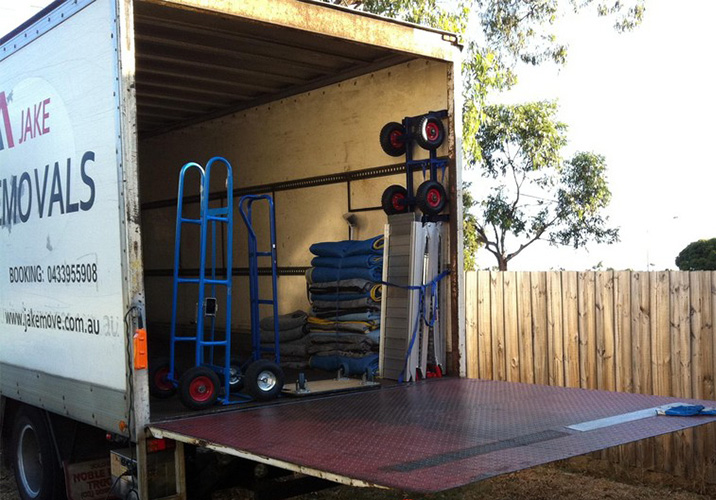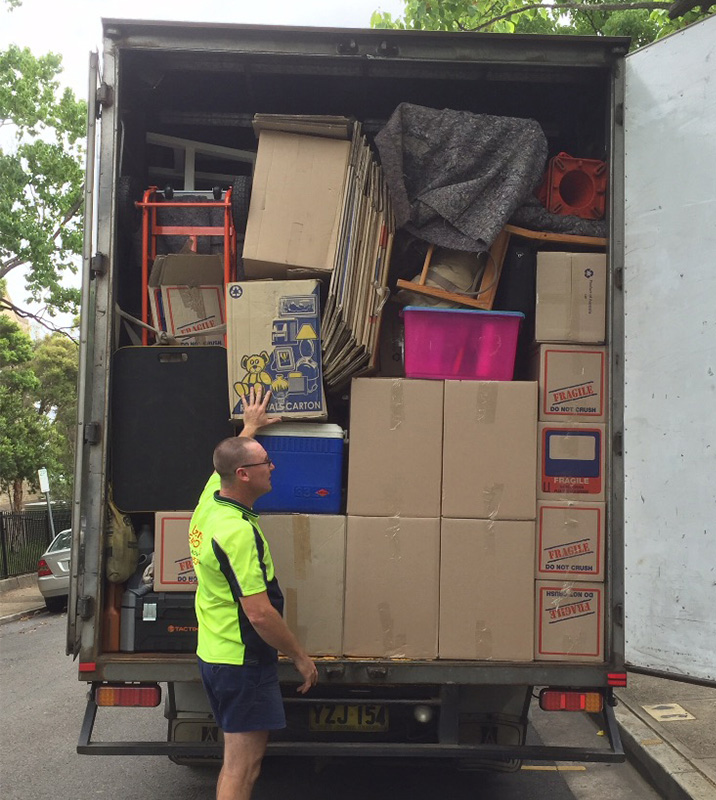
Find a local removalist
- Inspiration /
- Lifestyle /
- Real estate & moving /
- How to pack your house...
How to pack your house for a move
Our best house packing tips
Moving house can be stressful, especially if it’s a long-distance move. You need to take care of the practicalities and deal with the emotional impact of leaving your familiar surroundings for a new place. It’s important to plan the move carefully and keep track of all your possessions.
You need to make the arrangements well in advance to ensure the move happens smoothly and on schedule. A competent moving company can help you through the process and ensure your possessions reach your new home unharmed. In this article, we share our best moving house packing tips.
How to plan your move
Planning a move is relatively easy, but executing the plan is a little more complicated. The key to a successful move is to create a strategy and stick with it. You should also make sure your family is aware of the plan and understands their roles in the moving process. This is especially important if you have children.
Choose who carries out the move and how
People who move are often on a limited budget and have recently made a big financial commitment to a new property. They want to save as much money as possible and assume that a DIY move can help them do that. Unfortunately, that can prove to be very problematic and end up costing more money, especially if you have to make multiple trips in your own vehicle to carry out the move. Here’s what you can do instead of handling the entire move yourself:
- Consider back-loading – In this option, your possessions will share space with other people’s belongings during the move. You only pay for the square metre area you use during the transport. This can help you save a significant amount of money.
- Handle the packing – Most moving companies will pack your possessions for you at an additional cost. If you’re on a tight budget, you can skip this service and pack your belongings yourself. You can source free packing materials from several places like your local schools, local shops, friends who have recently moved, recycling centres, etc.
- A full move – If you’re on a tight schedule and need to carry out the move as quickly as possible, you should consider hiring the complete service. The movers will handle everything – packing, loading, transporting, unloading, and unpacking. Some movers will also disassemble large furniture and reassemble it if required.

Once you have made your choice regarding the moving service, you need to find a reliable mover with a good reputation, get quotes, and schedule the move at a convenient time. It’s important to book a mover at least three weeks before you intend to move, especially if you plan on moving during summer. Last minute moves are often expensive and cumbersome.
How to pack your possessions
The next step is to sort through your possessions and organise them into three different sections. Moving is an excellent excuse and motivation to get rid of things you don’t need.
- The “keep” section – This section consists of all items that you need and value. These items should have a place in your new home and serve a purpose. For example, if you have a baby grand piano that no one plays, you should consider selling it or donating it instead of transporting it to your new home. On the other hand, if you have an antique clock that fits in perfectly with your new home’s decor and has sentimental value you should include it in your keep section.
- The “donate or sell” section – This section is reserved for non-essential items that are in good condition. You can either donate these items to a local charity or sell them on online marketplaces like Gumtree and eBay. Selling the items will give you some extra money at a time when you have a large number of expenses.
- The “discard” section – Some items are just too damaged or worn to sell or donate. You need to dispose of these items safely, especially household cleaners, medications, abrasives, and other such substances. Come up with a solid disposal plan for all of your possessions in this section and discard them thoroughly before you’re due to pack for your move.
How to pack for a move
After you’ve sorted through your possessions, start the packing process. It’s a good idea to spread this out over a few weeks instead of rushing through it in the final week before you move. Here are some tips on how to handle the packing for your move:
- Collect the material – The first step is to collect packing materials like cardboard boxes of different sizes, as well as specialised boxes for glassware, dishware, electronics like televisions, etc. You’ll also need packing tape, box cutters, plastic wrap, packing paper, bubble wrap, ropes and strings, permanent markers, and labels. You can find all of these items online or in your local stores. Some moving companies provide a certain amount of free packing materials to their customers once they have a confirmed booking
- Pack one room at a time – You should keep the unpacking process in mind before you start packing your possessions. If you pack one room at a time and label all boxes properly, you’ll have an easier time unpacking at your new home. Packing one room at a time is also less stressful and ensures you don’t miss anything. You can maintain a list of all possessions in the room, so they’re easier to track during transportation.
- Pack non-essential items first – Pack non-essential items that you won’t need during the weeks leading up to the move first. If you pack the essential items, you’ll be forced to look for those things in your packed boxes repeatedly which can cause undue stress. Make a list of items that you won’t need during the weeks leading up to the move and pack them well in advance.
- Label everything and place a list of items on the box – After you’ve finished packing a box, label it carefully. The label should contain the name of the room, the name of the person those items belong to, whether the items are fragile, and a list of the items placed in the box. The latter will be useful if you need to retrieve something from the packed boxes as you won’t need to open all of them to look for something. You can refer to the list to see if the item you need is on it.
- Keep track of essentials – Essential items can easily become lost during the packing and moving process, so it’s important to keep track of them. These items include medications, documents like medical reports, identification papers such as passports, school paperwork, insurance paperwork, etc. They should be stored where you can easily find them.
- Pack essentials – Pack the most essential items a day or two before the move and make sure you have an overnight bag with your toiletries, change of clothes, medication, chargers and mobile devices, etc. This means you won’t have to deal with unpacking immediately after the move.
How to pack fragile items
There is absolutely a right and wrong way to pack fragile items. First things first ensure your cardboard boxes are still strong and sturdy. Reusing boxes from your last move might seem like an easy way to go, but cardboard boxes have a shelf life like anything else, so make sure they are still strong enough for your fragile items.
A good way of ensuring your fragile items arrive safely is to pack your bedding in with these items. Perhaps a doona in the bottom of the box, and a couple of pillows between pieces will ensure any knocks are absorbed in the bedding, and not in your breakables.
For glasses, mugs and cups ensure they are all wrapped separately. This can be a time-consuming task, but ensuring the glassware isn’t touching other glassware will significantly increase the chances of it arriving safely.
How to pack books
Depending on how many books you have to pack up, you may want to think about having several smaller boxes rather than one big box to pack your books. Packing smaller boxes means they will be easier to transport by yourself or your removalist.
When loading up the moving boxes, start with the largest and heaviest books first, then follow up with the smaller and lighter ones. Spread the big heavy books across your packing boxes to make loading and unloading easier.
Keep the books laying flat to avoid damaging or putting extra weight through the binds and don’t be afraid to leave some space in the top of the box, and you don’t need to pack it to the brim.

How to pack clothes
Sometimes the easiest way to move something is not to pack it into boxes at all. If you have a dresser or chest of drawers that are filled with your clothes, don’t empty it. Let your movers take it as it is and you won’t need to worry about unpacking at the other end either.
Before you start packing make sure your clothes are clean and throw away anything you’ve meant to ditch for a while now. The last thing you want to do it pack a bunch of clothes you’re never going to wear again.
If you have the time beforehand, pack away any seasonal clothing that you know you won’t need before the move starts.
Also, pack yourself an overnight bag of things you’ll likely wear on the couple of days around moving day. This will prevent you from having to sift through boxes to find something to wear once you’re in your new place.
If you have clothes already hanging, invest in garment bags or enclosed boxes to move these items. A few different sizes of vacuum seal bags will be a great space-saving way to get your clothes safely from A to B.
If you have suitcases or luggage handy, use these to fill with clothing and shoes. If you do need to pack clothing into boxes (folded and wrapped in tissue paper or sheets) be sure to use smaller boxes as clothing can be very heavy.
How to pack the kitchen
Packing a kitchen is often one of the most time-consuming jobs during a move. You need to take the time to pack fragile items properly and organise everything in a way that is easy to unpack at the other end.
If you still have the boxes from when you bought your appliances then repack them into these to move. If not, ensure all small parts are secured (a ziplock bag is a great way to keep small parts altogether, and they are easy to label) and that they are stored with the appliance. Bubble wrap and newspaper are both greats ways to keep appliances safe during a move.
See above for packing fragile items.
Keep all your silverware together to prevent them from getting loose and potentially damaging other items in your boxes. Wrapping them all together within a towel or big jumper is a great way to keep them all together.
Pots and pans are best in a large moving box as they can be awkward shapes and sizes. If each pan has a lid, store them together, and if you have small items that can be wrapped and added inside the pans, this can be an excellent way to save on extra packing boxes.
Any other small or miscellaneous items can be wrapped in newspaper and tucked into the boxes with the larger items in them. Save this til last.
Contact local removalists
How to organise utilities for the new home
The last thing you want is to live without gas, electricity, and water when you reach your new home. Arrange for these utilities in advance to ensure everything is in place when you move in. You should also arrange for telephone, internet, and television lines if needed.
You will also need to change your address with the post office, insurance companies, banking institutions, car licenses, and other such important aspects of your life. It’s a good idea to make these changes early because you need some time to settle into your new home after your move.
How to handle the day of the move
The day of the move can be stressful and chaotic, mainly because you need to ensure your entire family is coordinated. Here’s what you need to do:
- Go to sleep early the night before and wake up early.
- Make sure that you, your partner, and your children have a healthy breakfast.
- Keep games, iPads, toys, and other such items at hand. They will ensure your children are engaged during the move.
- Call the moving company and confirm the pickup time.
- Supervise the loading of all items and make sure the movers handle boxes with fragile possessions carefully.
- Do a final walkthrough of your home to ensure you haven’t missed anything.
- Say goodbye to any neighbours and friends before you move.
Moving home can be a stressful and time-consuming process so it’s a good idea to get all the help you can find. Hiring a moving company may be the best option for you, especially if you want to move across state lines or over long distances. You’ll save a lot of time and effort in lieu of some added expense.
How much will your job cost?
The Oneflare Cost Guide Centre is your one-stop shop to help you set your budget; from smaller tasks to larger projects.



